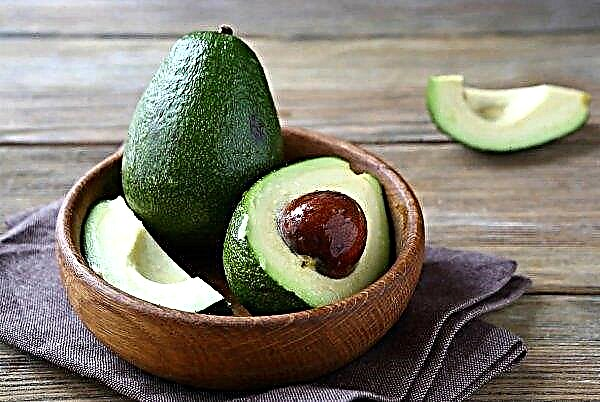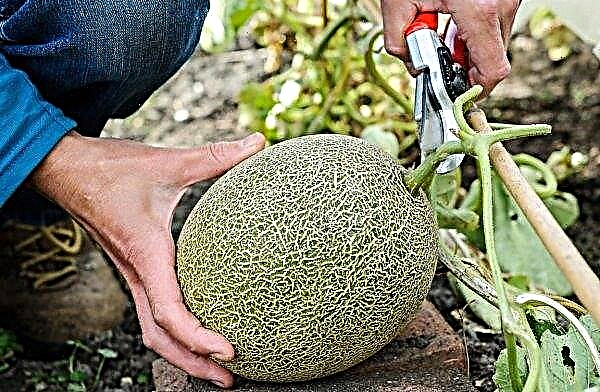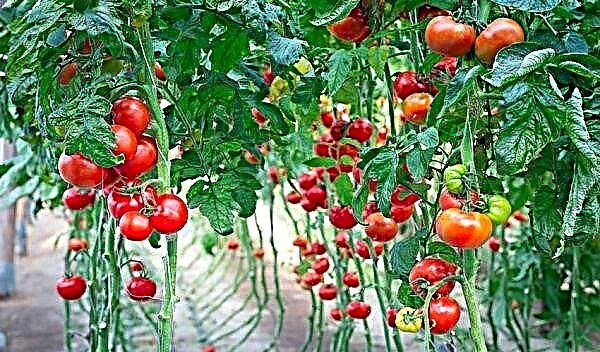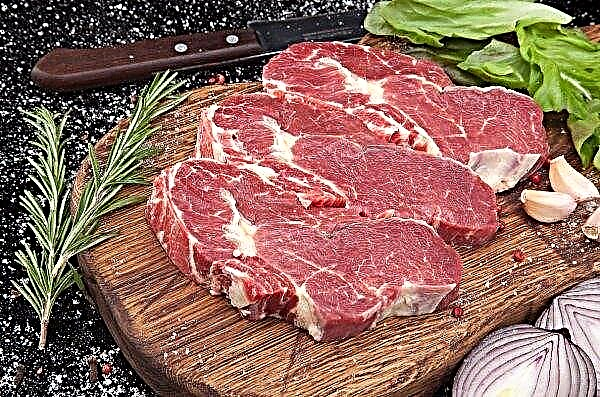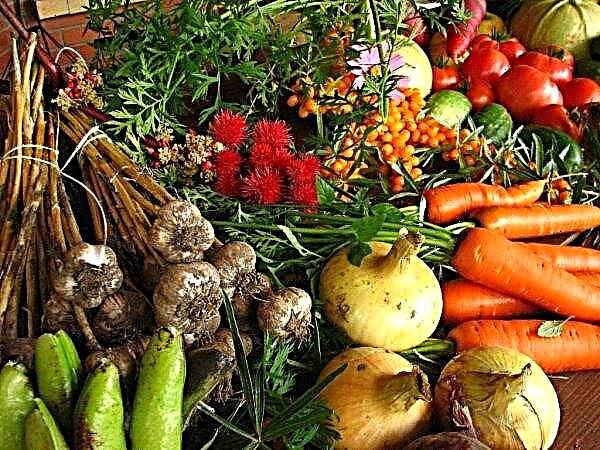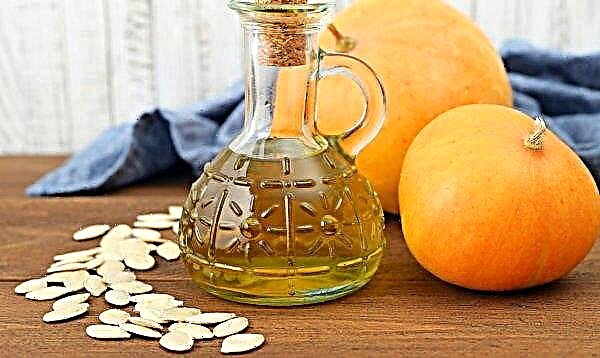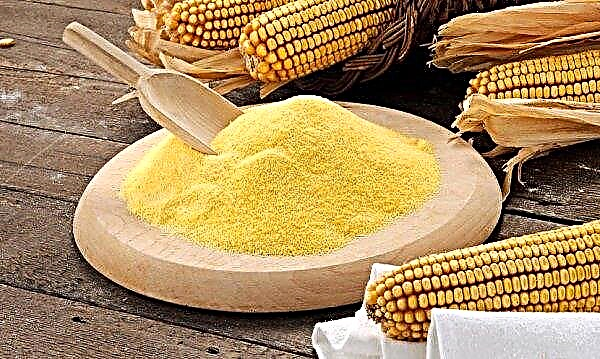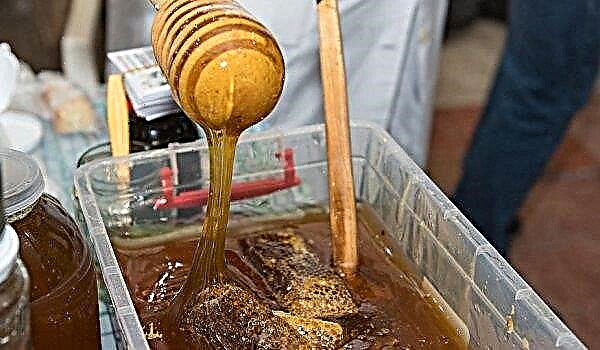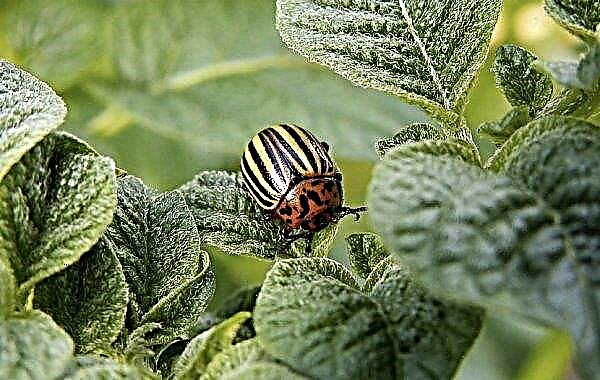Long-lasting and unique sweet product, popular according to historical data since the reign of Pharaoh Tutankhamun - honey, has many varieties, which we will consider in detail in this article. In addition, we will not ignore the healing qualities of this unique creation of bees.
Honey classification
According to its botanical origin, natural honey is subdivided into such species. (the exact affiliation of the product to which it seems possible to establish only by the laboratory method):
- Floral - The result of processing by bees of sweet juice with pulp secreted by plants.
- Fall - The sources of this product are animal pad or honey dew. In the first case, honey is a sweet, sticky liquid that forms on the leaves of plants, during the life of aphids or other insects that feed on plant sap, during the second process, nectar is released by leaves or needles under the influence of sudden changes in temperature.
- Mixed - a natural mixture of the above types of honey product.

Subspecies
The main varieties of honey are divided into specific subspecies by the number of honey plants.
Monofloral
A monoflora beekeeping product is called one that was obtained mainly from plants belonging to the same species. As a rule, monoflora honey mixtures are named according to the name of the plant that forms its nectar (for example, acacia, linden, buckwheat, etc.).
Polyfloral
Polyfloral honey - one that is collected from different types of plants; usually its name speaks of the place of collection of the product according to the zonal and landscape features of the territory:
- field (primary source - wild herbs growing in the steppe and forest-steppe areas);
- mountain (collected in the apiary lands of the highlands);
- meadow (obtained from flowers growing in the plains and mountain meadows of the alpine zone);
- taiga (collected from plants in the taiga, considered an elite species).
By color
The coloring matter inherits this unique delicacy from the melliferous plant from which it was collected. In terms of vitamins, the first place is occupied by white varieties of beekeeping products, but in terms of the content of trace elements useful for the human body, such as, for example, copper, manganese, iron and others, they are dark.

Dark
Dark varieties of honey are those that have a rich brown color with shades from brown to bright amber:
- heather;
- angelica;
- eucalyptus;
- hyssop;
- bilberry;
- colic;
- coniferous;
- orange
- chicory;
- mountain ash;
- buckwheat;
- others.
Did you know? Honey is one of the oldest crafts Slavs. Until the moment of domestication of bees, this occupation was called storing, and people who collected beekeeping products in hollows were called stalkers.
Whites
Light or white varieties of honey, differing in the color scheme from golden yellow to translucent, are extracted from the flowers and leaves of the following plants:
- barberry;
- meadow or field cornflowers;
- leaf pea;
- fragrant reseda;
- mustard;
- blackberries;
- phacelia;
- mother liquor, or Moldavian snakehead;
- kenaf;
- rapeseed;
- fireweed (among the people of "Ivan Tea");
- white or pink clover;
- motherwort;
- holly maple;
- coriander, or cilantro;
- sowing sainfoin;
- lavender;
- swallow;
- blush (bruise);
- alfalfa;
- raspberries;
- lemon balm;
- peppermint;
- thirst;
- white shandra;
- parsnip;
- sunflower;
- sage;
- apple trees;
- tatarnik, or thistle;
- others.

By viscosity
The structure of the beekeeping product depends not only on the percentage of water content in it, but also on air humidity: if the summer is dry, honey will be more dense, and vice versa. At high atmospheric temperatures, the viscosity of treats drops significantly.
Liquid and thick
Freshly pumped honey product can be very liquid, as if watery (from clover, acacia, other plants) and more dense (heather, coniferous, similar species).
Fine and coarse, pasty
Crystallization of honey is an inevitable phenomenon that occurs after some time of storage of the product after removing it from the cell, during which the product acquires a cloudy tint and a dense, sometimes even solid consistency. This is due to evaporation of moisture and the formation of sugar crystals.
Fine-grained honey is characterized by the presence of crystals, which according to their dimensional characteristics do not exceed 0.5 mm in diameter; the coarse-grained structure of the treats, respectively, suggests the formation of crystallized particles with a diameter slightly larger than 0.5 mm.A paste-like or wax-like crystallized beekeeping product is also called lard-like due to the presence of crystals so small that they are not visible to the human eye without special magnifying equipment.
Slow crystallization is inherent in those bee varieties that contain an increased amount of colloidal elements, polysaccharides and protein compounds (acacia, sage, in contrast to sunflower, alfalfa and sainfoin honey).

According to the method of receipt and processing
There are various ways of obtaining honey, on which the subsequent trading type of product depends:
- centrifugal - obtained using a special device - a honey extractor;
- honey honey product it is not removed from the “natural packaging” - cell cells, but sold in the same form;
- cell honey presented in special plywood blocks or sections made of plastic;
- pressed method for producing goodies consists in squeezing the last of the cells, which cannot be saved.
What is the most healthy honey?
General characteristics of the vitamin composition of honey, which differ depending on the specific type, can be displayed in the following table:
| Element | Mass content, mcg / g |
| Vitamin C | Minimum - 0.1, maximum - 2600 |
| Niacin | Minimum - 0.5, maximum - 10 |
| Thiamine | Minimum - 0.1, maximum - 0.4 |
| Tocopherol | On average - 10, may be absent |
| Retinol | On average - 0.4, may be present in the form of traces |
| Riboflavin | Minimum - 0.1, maximum - 1.5 |
| Biotin | Minimum - 0.1, maximum - 6.4 |
| Pantothenic acid | Minimum - 0.5, maximum - 11 |
| Pyridoxine | Minimum - 0.2, maximum - 6 |
Let us consider separately the most popular types of beekeeping product in the ratio of their beneficial qualities for the human body, as well as taste and aroma parameters.
Important! 100 g of honey product on average includes 98 mg of various amino acids, among which there are lysine, and glutamic acid, and arginine, and leucine.
Lime
Honey extracted from the flowers of the “queen” of honey plants - linden, is considered one of the very first varieties of this product that appeared. It has a dull color with a tint range from yellow to amber, but only deflated is completely transparent. The color of the linden beekeeping product can vary from standard wheat to a greenish color with a slight gray tint, which indicates an admixture of honeydew in it. If the color characteristics of the delicacy are dominated by a bright yellow tone, there is a certain part of flower honey in it.
The linden appearance is characterized by a stable finish with a characteristic astringency and bitterness, a pure woody aroma with notes of mint, reflecting the smell of blooming linden. Linden honey is one of the sweetest varieties, the composition of which is rich in 40% fruit and 36% grape juice.
- It also includes a variety of vitamins, enzymes and mineral salts, and the beneficial properties of this variety are as follows:
- the fight against acute respiratory infections and acute respiratory viral infections, impaired functioning of the gallbladder and kidneys, failures in the digestive system;
- preventive beneficial effect on the retina of the organs of vision;
- quick cleaning of the body due to the diuretic and laxative effect of the product;
- prevention of depression, increased stress tolerance, improved mood;
- strengthening the immune system.
Important! Collecting monoflora honey product in its pure form is practically impossible, for this reason such names are bearing no less than 80% of the pollen of the plant, after which the goodies are named.
Buckwheat
Buckwheat honey is produced by bees from the nectar of flowering buckwheat and is distinguished by a rich dark color with a hue from brown to red. Due to its exquisite aroma and astringent taste, causing an unusually pleasant sore throat, this species belongs to the high-grade and is most valuable. As a result of rapid crystallization, he is able to change his color to a lighter, and taste - more pronounced.
The high iron content is due to the inheritance of this amount from the natural source - buckwheat. In addition, it contains a variety of vitamins and amino acids, as well as minerals (copper, calcium, phosphorus, zinc). These components, along with a considerable amount of protein, are present in it in a much larger amount than in white varieties of honey.
- Life-giving qualities:
- treatment and prevention of diseases associated with a lack of vitamins in the body;
- normalization of blood pressure;
- the fight against inflammatory processes of connective tissue with rheumatism, as well as the release of blood into the retina of the eye with disorders of the functionality of the organs of vision;
- elimination of the negative consequences of such serious illnesses as scarlet fever, intracerebral hemorrhage, radiation sickness.
Acacia
Acacia honey is formed from sweet juice, collected mainly from yellow and white acacia flowers. Thus, the color characteristics of the product are directly dependent on the type of flowering plant: with white acacia, an almost transparent delicacy is obtained (in its pure form it can be found quite rarely), yellow acacia honey has a pale golden hue with a pearly-shiny shimmer.
This species has a liquid structure that has the ability to maintain its original appearance for a long time up to a year after collection. The crystallized version of the beekeeping product from acacia acquires a fine-grained texture and whitish color. The smell of goodies is delicate floral, muffled, the taste is sweet, delicate, without bitterness. Sometimes a product is called "baby honey" due to the fact that it does not provoke allergies in babies.
- Positive properties:
- contributes to the establishment of the digestive process with disorders of the digestive tract;
- suitable for special nutrition for diabetics;
- has an antiseptic effect in eczema, neuroallergic skin diseases, conjunctivitis;
- lowers blood pressure;
- It has a calming effect on the functioning of the nervous system, prevents and treats insomnia;
- helps in the fight against inflammatory processes of the kidneys and liver;
- It has a general strengthening effect.
Sunflower
As the name implies, this kind of honey is produced in the process of vital activity of bees from sunflower nectar produced in the flowers of the plant. The characteristic color of the product is wheat golden or amber mustard. According to its own texture, this variety of goodies is quite thick, whose feature is the tendency to rapid crystallization. In the liquid form, it stays a fairly short period (up to three weeks).
The taste of sunflower honey is pleasantly sweet with a light fruity sourness without any other impurities and harshness. In the process of thickening, the product acquires a characteristic bitterness. By the way, in a sugared form, it melts very easily in the mouth. Aroma - floral with notes of fresh hay.
Sunflower honey product is the most quickly assimilated of all types of honey: the glucose level (white layer on the surface of the crystallized variation) is one and a half times higher than in other varieties of sweet substance.
- And due to the presence of a large number of vitamins, minerals, amino acids, natural enzymes and antioxidants, sunflower honey:
- has a beneficial effect in the treatment of diseases of the heart, respiratory tract and lungs;
- helps fight digestive system disorders, facilitates diarrhea;
- has antibacterial properties;
- cleanses the body of excess cholesterol, toxins and toxins;
- useful for diseases of the skeletal system.
Donnikovy
Honey obtained by bees from the nectar of “sweet clover”, or sweet clover, as a rule, contains an admixture of other floral herbs of the summer period. The aromatic product with the smell of vanilla has a whitish milky color and a medium sweet taste. Crystallization occurs a month after collection.
- Positive properties of the clover variety of goodies:
- strengthening the immune system;
- stimulation of metabolism and increased appetite, purification of intestinal microflora, neutralization of bloating, elimination of constipation in case of disorders of the digestive system;
- Promoting the quickest coughing up and elimination of sputum in diseases of the respiratory tract (bronchitis, pneumonia);
- increase in blood pressure with hypotension, a decrease in the amount of cholesterol in atherosclerosis, stimulation of myocardial function in heart failure, normalization of the heart rhythm;
- recovery of emotional state, protection from stress, strengthening sleep, getting rid of migraine attacks;
- relief of symptoms of toxicosis, stimulation of lactation;
- disinfecting effect for skin lesions, treatment of acne;
- analgesic effect for headaches, toothaches.
Did you know? The most expensive honey in the world is the so-called "elven" honey from Artvin (a city in Northeast Turkey). The direct extraction of this valuable product is carried out in the cave depths of the Sarikair valley at a level of 1800 m underground.
Chestnut
The color of chestnut honey is completely dependent on the source of honey. If nectar was collected from seed chestnut, the color of the product will be a rich dark brown hue. If the sweet juice of horse or wild chestnut was used in the process of vital activity of the bees, then the resulting substance will lack any color. The taste of products extracted from seed is bitter, the texture is liquid, the crystallization period is up to 1 year. The taste of honey from wild chestnut is slightly sweet, the consistency is similar, the crystallization period is up to several weeks.
- Useful qualities of a chestnut type of goodies:
- the role of the natural antibiotic in the process of both internal (for colds, tonsillitis, bronchitis) and external (for skin diseases) use;
- decreased acidity in the stomach, accelerated metabolism, elimination of intestinal colic;
- increasing the elasticity of the walls of blood vessels, normalizing blood pressure, lowering cholesterol levels in the blood, treating varicose veins, forming bundles inside the blood vessels;
- restoration of the menstrual cycle, reduction of pain during menstruation, treatment of thrush and inflammation of the bladder;
- elimination of erectile dysfunction, accelerated sperm motility, improved seminal fluid quality;
- calming effect, normalization of emotional state and sleep.
Angelica
Honey from angelica, or angelica officinalis has a dark red-brown color, a sharp aroma and a long-lasting liquid texture. During crystallization, the product turns into a gummy mass with microscopic particles. The specific taste is bitter with a touch of caramel.
- The value of angelica, or angelica beekeeping products consists in the following effects on the human body:
- diaphoretic, antibacterial, expectorant properties in diseases of the respiratory system;
- wound healing effect for burns, damage to the epidermis;
- relaxing effect on malfunctions of the central nervous system;
- treatment of enzymatic deficiency, constipation, colitis, enteritis and other digestive disorders;
- help with kidney and liver diseases;
- increase in hemoglobin level;
- beneficial effect in the treatment of malfunctions of the prostate;
- strengthening the cardiovascular system.
Important! Contraindications to the use of this or that type of honey are: individual intolerance to beekeeping products, allergic reactions to pollen of a honey plant, diseases associated with high blood sugar and impaired glucose uptake, excess fat deposits. Women in position, nursing mothers and babies under the age of 1 year can use the product only after prior consultation with a doctor.
Sainfoin
Honey collected from pale pink sainfoin flowers is considered one of the most prestigious varieties of natural delicacies. Its taste is sweet, the smell resembles the aroma of blooming roses, the color and structural features after collection are distinguished by a liquid consistency and a straw-yellow color. In the process of natural crystallization, the mass acquires a fairly dense texture and light cream color.
- The multifaceted benefits of this type of honey are its following qualities:
- restoration of the activity of the digestive tract, liver and kidneys;
- normalization of metabolic processes in the body;
- improving the functionality of nerve cells;
- accelerating the regeneration of the skin, preventing bleeding of the gums;
- moisturizing and softening effect on the epidermis;
- sedative effect with prolonged exposure to stressful situations;
- normalization of blood structure (reduction of sugar and cholesterol, optimization of the amount of hemoglobin);
- antimicrobial effects on various bacteria;
- prevention of the development of malignant tumors;
- beneficial effect on the brain, memory;
- improvement of the urinary and reproductive organs in the presence of gynecological abnormalities in the body of women and difficulties with potency in men.
Floral
Natural flower honey can include sweet juice of about 150 species of flowering plants, and in trade it can be found under various names: “mountain”, “forbs”, “meadow”, “forest”. Attractive smell and rich sweet taste, color variations from pale wheat to dark chestnut - this is what distinguishes floral from any other types of beekeeping products.
- The healing properties of floral honey treats depend on the plants from which it was collected, but the following are common:
- muscle recovery after heavy exercise;
- strengthening the body's defenses;
- promoting the proper process of blood coagulation and blood cell production;
- optimization of the central nervous system;
- improvement of blood circulation;
- prevention of diseases of the digestive system.
Did you know? The supreme sun deity in Hindu mythology - Vishnu - is depicted in the image of a bee sitting on a lotus flower. And the Indian god of love and sensual attraction - Kama - is painted with a bow in his hands dotted with bees, which according to myths symbolizes the sweetness and pangs of love.
Cypriot
A beekeeping product, extracted from red-purple flowers called “Ivan Tea”, or fireweed, has a mild taste and a light pleasant aroma. Due to the low severity and saturation of these characteristics, many mistakenly believe that this type of honey is less useful than others.
However, in reality this is far from the truth. The cypriot type of sweet natural delicacy has proven itself in the prevention, as well as treatment of the following diseases due to a general strengthening effect on the immune system:
- ARI and ARVI (colds, tonsillitis, flu, bronchitis);
- central and peripheral nervous systems (insomnia, postpartum depression);
- heart and blood vessels (atherosclerosis, hypertension, hypotension);
- digestive organs (intestinal infections, gastritis, ulcer, inflammation of the duodenum);
- genitourinary system and inflammation of the prostate.
A pale color with a light golden hue and a liquid consistency are signs of a newly harvested beekeeping product. In process of crystallization and thickening, the delicacy from “Ivan-tea” becomes light milk, sometimes with a beige hue and acquires a creamy texture.
Features of the choice of honey
In order to counterfeit honey, water, ordinary sugar or powder, and even cosmetic clay are most often used. In order not to make a mistake when choosing and not to encounter low-quality products, it is best to buy this type of product together with bee honeycombs. However, as practice shows, this is very problematic due to impracticality, difficulties in transportation and the inability to determine the exact amount of honey in cells.
Thus, if you are faced with a choice of delicacies pre-packaged in jars, ask them to open containers to examine the consistency - this is practically impossible in stores, but a conscientious seller is unlikely to refuse you on the market. When picking a small part into a spoon, a high-quality honey product should be distinguished by its ductility, and when turning the spoon, drain it with a viscous and continuous stream, in case of contact with any surface, form an insignificant slide.
Important! A match, previously lowered into real honey, will light up when ignited, a fake - no.
How to store honey?
The basic rules for storing one of the most valuable and useful beekeeping products for more than one year are as follows:
- optimal temperature indicators - + 0 ... + 20 ° С (storage at room temperature will provoke honey separation, long-term maintenance at temperatures above + 20 ° С - destruction of a significant part of vitamins, heating of the substance to temperatures above + 40 ° С - loss of almost all useful properties ; honey storage at zero temperature and below - product freezing with preservation of all properties);
- the best dishes are a clean, perfectly dry jar of dark glass with a tight-fitting lid, or ceramic, enamelled containers (in no case should honey be placed in an iron or galvanized container, as well as enamelled with chips);
- the lower the level of humidity, the better for observing the delicacies storage conditions: the container with the product should be very tightly closed, since it has the ability to absorb ambient moisture;
- direct sunlight heats the container with honey and destroys one of the most important elements of the product responsible for its antimicrobial qualities - inhibin; the most suitable is a dark place;
- it is typical for honey to absorb not only moisture, but also the aroma of strongly smelling products (salted fish, cheeses, boiled eggs).

Thus, we can conclude that honey is a unique natural product that has exceptional beneficial qualities for both women and men. The features of each of the most popular types, storage rules and recommendations for selection, considered in this article, will help the reader to experience as many beneficial properties as possible from this valuable creation of bees.




